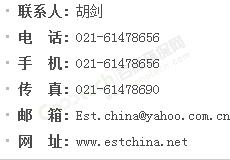ESTпњљпњљпњљI(yпњљпњљ)пњљпњљпњљ–Зпњљ(guпњљпњљ)пњљпњљпњљпњљЋЊ
пњљпњљ(lпњљпњљi)‘іпњљпњљESTпњљпњљпњљI(yпњљпњљ)пњљпњљпњљ–Зпњљ(guпњљпњљ)пњљпњљпњљпњљЋЊ пњљпњљxпњљпњљ1073 пњљпњљпњљ¬Хr(shпњљпњљ)пњљgпњљпњљ2008-06-23 15:22The connection between chemistry & electricity&is a very old one, going back to Alessandro&Voltaпњљпњљs discovery, in 1793, that electricity&could be produced by placing two dissimilar&metals on opposite sides of a moistened paper.
By using electrochemical principles, electrical energy is converted into the chemical energy of desirable materials.
Nature can convert chemicals into electricity in ways that we regret: corrosion is an example of this unwelcome conversion.
Electrodes are the places where chemistry converts to electricity, or vice versa. A typical electrode is the surface of a piece of metal in contact with a solution of salts and other chemicals dissolved in water.

